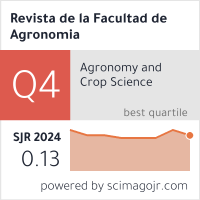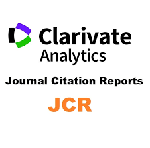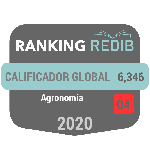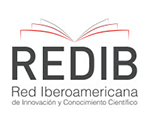Detection of Diaporthe sp. in cacao plants (cv. CCN 51) in Guayas Province, Ecuador
Abstract
Cacao cultivation contributes significantly to the global economy. However, a decline in production is evident due to the presence of pathogens, especially within the fungi kingdom, where some remain unidentified. The objective of this study was to identify the presence of Diaporthe sp. in cacao plants of the CCN-51 cultivar in Ecuador. Samples of cacao branches with symptoms of rot and necrotic tissue were collected (cankers). The samples were disinfected and processed in the Microbiology Laboratory of the Milagro State University, Ecuador. Cambium fragments were cultured on potato dextrose agar (PDA) and incubated at 27°C. After culture purification, morphological characterization and molecular identification were performed using ITS and EF1-α barcoding methods. The sequences were compared with the NCBI GenBank database for validation. A phylogenetic analysis was performed between the strains found and those reported in Puerto Rico and Australia. Morphological identification placed the isolates within the genus Diaporthe, which was confirmed molecularly. Phylogenetic analysis demonstrates marked genetic diversity among isolates within the genus Diaporthe. These findings suggest that Diaporthe spp. is prevalent in Ecuadorian cacao plantations and that molecular methods are effective for its identification. The presence of this pathogen implies the need for management strategies to mitigate its impact on cacao production.
Downloads
References
Chávez, J. P. A., Romero, E. J. C., Sabando, K. D. C., & Ramos, V. E. P. (2024). Buenas prácticas agrícolas (GAPS) en el cultivo de cacao (Teobroma cacao) injerto en la Parroquia Luz de América. Revista Social Fronteriza, 4(Especial), e4-Especial. https://doi.org/10.59814/resofro.2024.4(Especial)152
Chóez-Guaranda, I., Espinoza-Lozano, F., Reyes-Araujo, D., Romero, C., Manzano, P., Galarza, L., & Sosa, D. (2023). Chemical characterization of Trichoderma spp. Extracts with antifungal activity against cocoa pathogens. Molecules, 28(7), 3208. https://doi.org/10.3390/molecules28073208
Cobos Mora , F., Montero Flores , P., Gómez Villalva , J., & Pérez Almeida, I. (2024). Eficiencia de agentes antagónicos para el control de moniliophthora roreri en el cultivo de cacao. Magazine De Las Ciencias: Revista De Investigación E Innovación, 9(2), 16-29. https://doi.org/10.33262/rmc.v9i2.3100
Colombatti Moran, J., Moran Rodríguez, P., & Ruiz Parrales, Y. (2024). Evaluación y caracterización de la sustentabilidad en fincas productoras de cacao (Theobroma cacao L.) del Cantón Baba, provincia de Los Ríos. Conocimiento Global, 9(S1), 1-9. https://doi.org/10.70165/cglobal.v9iS1.482
Córdova Durán, E. G. (2025). Cacao fino de aroma: Comercio interno en el Ecuador. Arandu UTIC, 11(2), 3365-3380. https://doi.org/10.69639/arandu.v11i2.506
de Novais, D. P. S., Batista, T. M., Costa, E. A., & Pirovani, C. P. (2023). Genomic and pathogenicity mechanisms of the main Theobroma cacao L. Eukaryotic Pathogens: A Systematic Review. Microorganisms, 11(6), 1567. https://doi.org/10.3390/microorganisms11061567
Debnath, A. J., Dutta, P., & Bahadur, A. (2023). Diseases of cocoa (Theobroma cacao) and their integrated management. In A. Bahadur & P. Dutta (Eds.), Diseases of Commercial Crops and Their Integrated Management (pp. 38-52). CRC Press. https://doi.org/10.1201/9781032627908
Delgado-Ospina, J., Molina-Hernández, J. B., Chaves-López, C., Romanazzi, G., & Paparella, A. (2021). The role of fungi in the cocoa production chain and the challenge of climate change. Journal of Fungi, 7(3), 202. https://doi.org/10.3390/jof7030202
Dos Santos, G. C., Lima Horn, L. M., Trezzi Casa, R., Soardi, K., Lopes, M. A., Nascimento, S. C. do, Santi, V. M., Nascimento da Silva, F., Kór, D. G., & Gonçalves, M. J. (2024). First report of seed decay caused by Diaporthe ueckeri on soybean in Brazil. Plant Disease, 108(9), 2925. https://doi.org/10.1094/PDIS-04-24-0814-PDN
Fernández Muñoz, R. del P., Mori Culqui, P. L., & Chavez Quintana, S. G. (2022). Efecto del tipo de azúcar en la aceptación y capacidad antioxidante de los chocolates oscuros. Revista Científica UNTRM: Ciencias Naturales e Ingeniería, 5(1), 64-69. https://doi.org/10.25127/ucni.v4i3.810
Gao, Y., Liu, F., Duan, W., Crous, P. W., & Cai, L. (2017). Diaporthe is paraphyletic. IMA Fungus, 8(1), 153-187. https://doi.org/10.5598/imafungus.2017.08.01.11
Guo, J. M., Liang, J. J., Li, K. Y., Ling, X. F., & Yi, R. H. (2024). First report of Brown blotch disease caused by Diaporthe ueckeri on Hyophorbe lagenicaulis in China. Plant Disease, 108(1), 224. https://doi.org/10.1094/PDIS-08-23-1619-PDN
Jiménez, W., Ramírez, A., López, J., & Alvarez, A. (2022). Análisis filogenético de aislamientos patogénicos de la familia Botryosphaeriaceae en cacao (Theobroma cacao L.) en la zona de Los Ríos. Ciencia y Tecnología, 15(2), 43-52. https://doi.org/10.18779/cyt.v15i2.583
Liu, H. Y., Luo, D., Huang, H. L., & Yang, Q. (2024). Two new species of Diaporthe (Diaporthaceae, Diaporthales) associated with Camellia oleifera leaf spot disease in Hainan Province, China. MycoKeys, 102, 225-243. https://doi.org/10.3897/mycokeys.102.113412
Long, H., Zhang, Q., Hao, Y.Y., Shao, X.Q., Wei, X.X., Hyde, K. D., Wang, Y., & Zhao, D.G. (2019). Diaporthe species in south-western China. MycoKeys, 57, 113-127. https://doi.org/10.3897%2Fmycokeys.57.35448
Mena, E., Larzábal, J., Stewart, S., & Ponce de Leon, I. (2024). First report of Diaporthe miriciae and Diaporthe masirevicii causing soybean stem canker in Uruguay. New Disease Reports, 49(2), e12283. https://doi.org/10.1002/ndr2.12283
Mena, E., Stewart, S., Montesano, M., & Ponce de León, I. (2023). Current understanding of the Diaporthe/Phomopsis complex causing soybean stem canker: A focus on molecular aspects of the interaction. Plant Pathology, 73(1), 31-46. https://doi.org/10.1111/ppa.13803
Patiño-Moscoso, M. A., Osorio-Guerrero, K. V., Flórez-Gómez, D. L., Sarmiento-Moreno, L. F., & Vargas-Ramírez, D. N. (2023). Molecular identification and prevalence of fungal contaminants in seeds of semi-annual crops. Scientia Agropecuaria, 14(3), 347-358. https://doi.org/10.17268/sci.agropecu.2023.030
Perera, R. H., Hyde, K. D., Dissanayake, A. J., Jones, E. B. G., Liu, J. K., Wei, D., & Liu, Z. Y. (2018). Diaporthe collariana sp. nov., with prominent collarettes associated with Magnolia champaca fruits in Thailand. Studies in Fungi, 3(1), 141-151. https://doi.org/10.5943/sif/3/1/16
Perrine-Walker, F. (2020). Phytophthora palmivora–cocoa interaction. Journal of Fungi, 6(3), 167. https://doi.org/10.3390/jof6030167
Puig, A. S. (2023). Fungal pathogens of cacao in Puerto Rico. Plants, 12(22), 3855. https://doi.org/10.3390/plants12223855
Ramón Guanuche, R. E., Verdezoto Reinoso, M. D. R., Romero, D. J., & Meleán Romero, R. A. (2024). Análisis de las exportaciones cacaoteras en Sudamérica y su relación con Ecuador. Uniandes Episteme, 11(1), 86-100. https://doi.org/10.61154/rue.v11i1.3382
Ramos, M. J., Beilhe, L. B., Alvarado, J., Rapidel, B., & Allinne, C. (2024). Disentangling shade effects for cacao pest and disease regulation in the Peruvian Amazonia. Agronomy for Sustainable Development, 44(1), 11. https://doi.org/10.1007/s13593-024-00948-6
Rêgo, A. P. B., Mora-Ocampo, I. Y., & Corrêa, R. X. (2023). Interactions of different species of Phytophthora with cacao induce genetic, biochemical, and morphological plant alterations. Microorganisms, 11(5), 1172. https://doi.org/10.3390/microorganisms11051172
Rehner, S. A., & Buckley, E. (2005). A Beauveria phylogeny inferred from nuclear ITS and EF1-α sequences: evidence for cryptic diversification and links to Cordyceps teleomorphs. Mycologia, 97(1), 84-98. https://doi.org/10.1080/15572536.2006.11832842
Rodríguez Velázquez, N.D., Gómez de la Cruz, I., Chávez Ramírez, B., & Estrada de los Santos, P. (2024). Biological control of diseases in Theobroma cacao. In A. Kumar, G. Santoyo & J. Singh (Eds.) Biocontrol Agents for Improved Agriculture (pp. 101-120). Plant and Soil Microbiome, Academic Press. https://doi.org/10.1016/B978-0-443-15199-6.00009-9
Ruiz-Chután, J. A., Berdúo-Sandoval, J. E., Alvarado, V., Kalousová, M., Lojka, B., Žiarovská, J., Montes, L., Sánchez-Pérez, A., & Fernández, E. (2024). Genetic diversity and population structure of Moniliophthora roreri in cocoa producing areas of Guatemala. Journal of Microbiology, Biotechnology and Food Sciences, 13(6), e5947. https://doi.org/10.55251/jmbfs.5947
Sánchez, M. C., Ridao, A. del C., y Colavita, M. L. (2015). Diaporthe caulivora: agente causal de cancro del tallo predominante en cultivos de soja del sudeste bonaerense. Fave. Sección Ciencias Agrarias, 14(2), 141-160. http://dx.doi.org/10.14409/fa.v14i2.5729
Santos, J. M., Vrandečić, K., Ćosić, J., Duvnjak, T., & Phillips, A. J. L. (2011). Resolving the Diaporthe species occurring on soybean in Croatia. Persoonia-Molecular Phylogeny and Evolution of Fungi, 27(1), 9-19. https://doi.org/10.3767/003158511X603719
Serrato-Diaz, L. M., Ayala-Silva, T., & Goenaga, R. (2022). First report of Diaporthe tulliensis and D. pseudomangiferae causing cacao pod rot in Puerto Rico. Plant Disease, 106(9), 2530. https://doi.org/10.1094/PDIS-12-21-2634-PDN
Sousa, R. do S. dos R. de, Lima, G. V. S., Garcias, J. T., Gomes, G. de O., Mateus, J. R., Madeira, L. D. P. dos S., Seldin, L., Rogez, H. L. G., & Marques, J. M. (2024). The microbial community structure in the rhizosphere of Theobroma cacao L. and Euterpe oleracea Mart. is influenced by agriculture system in the Brazilian Amazon. Microorganisms, 12(2), 398. https://doi.org/10.3390/microorganisms12020398
Sun, X.-D., Cai, X.-L., Pang, Q.-Q., Zhou, M., Zang, W., Chen, Y.-S., & Bian, Q. (2021). First report of Diaporthe longicolla causing leaf spot on Kalanchoe pinnata in China. Plant Disease, 105(11), 3739. https://doi.org/10.1094/pdis-12-20-2681-pdn
Thompson, S. M., Tan, Y. P., Shivas, R. G., Neate, S. M., Morin, L., Bissett, A., & Aitken, E. A. B. (2015). Green and brown bridges between weeds and crops reveal novel Diaporthe species in Australia. Persoonia-Molecular Phylogeny and Evolution of Fungi, 35(1), 39-49. https://doi.org/10.3767/003158515x687506
Vera, J., Lazo, R., Barzallo, D., & Gavin, C. (2021). Caracterización química y degradabilidad in situ de residuos orgánicos como alternativa alimenticia para bovinos. Ecuadorian Science Journal, 5(4), 1-14. https://doi.org/10.46480/esj.5.4.166
Vera-Rodríguez, J. H., Jiménez-Murillo, W. J., Naula-Mejía, M. C., Villa-Cárdenas, U. J., Zaruma-Quito, F. A., Montecé-Maridueña, G. Y., Cabrera-Carreño, W. J., Zambrano-Valencia, F. N., & Astudillo-Ludizaca, C. M. (2021). Residuos de la producción de cacao (Theobroma cacao L.) como alternativa alimenticia para rumiantes. Revista Colombiana de Ciencia Animal - RECIA, 13(2), e839. https://doi.org/10.24188/recia.v13.n2.2021.839
Vidić, M., Jasnić, S., & Petrović, K. (2011). Vrste roda Diaporthe/Phomopsis na soji u Srbiji. Pestic Fitomed (Beograd), 26(4), 301-315. https://agris.fao.org/search/en/providers/122612/records/647365282c1d629bc97febd0
Wang, X., Guo, Y., Du, Y., Yang, Z., Huang, X., Hong, N., Xu, W., & Wang, G. (2021). Characterization of Diaporthe species associated with peach constriction canker, with two novel species from China. MycoKeys, 80, 77-90. https://doi.org/10.3897%2Fmycokeys.80.63816
White, T. J., Bruns, T., Lee, S., & Taylor, J. (1990). Amplification and direct sequencing of fungal ribosomal RNA genes for phylogenetics. In M. Innis, D.H. Gelfand, J.J. Sninsky, & T.J. White (Eds.). PCR Protocols: A Guide to Methods and Applications (pp. 315-322). Academic Press. https://doi.org/10.1016/B978-0-12-372180-8.50042-1
Zhu, Y.Q., Ma, C.Y., Xue, H., Piao, C.G., Li, Y., Jiang, N. (2023). Two new species of Diaporthe (Diaporthaceae, Diaporthales) in China. MycoKeys, 95, 209-228. https://doi.org/10.3897/mycokeys.95.98969
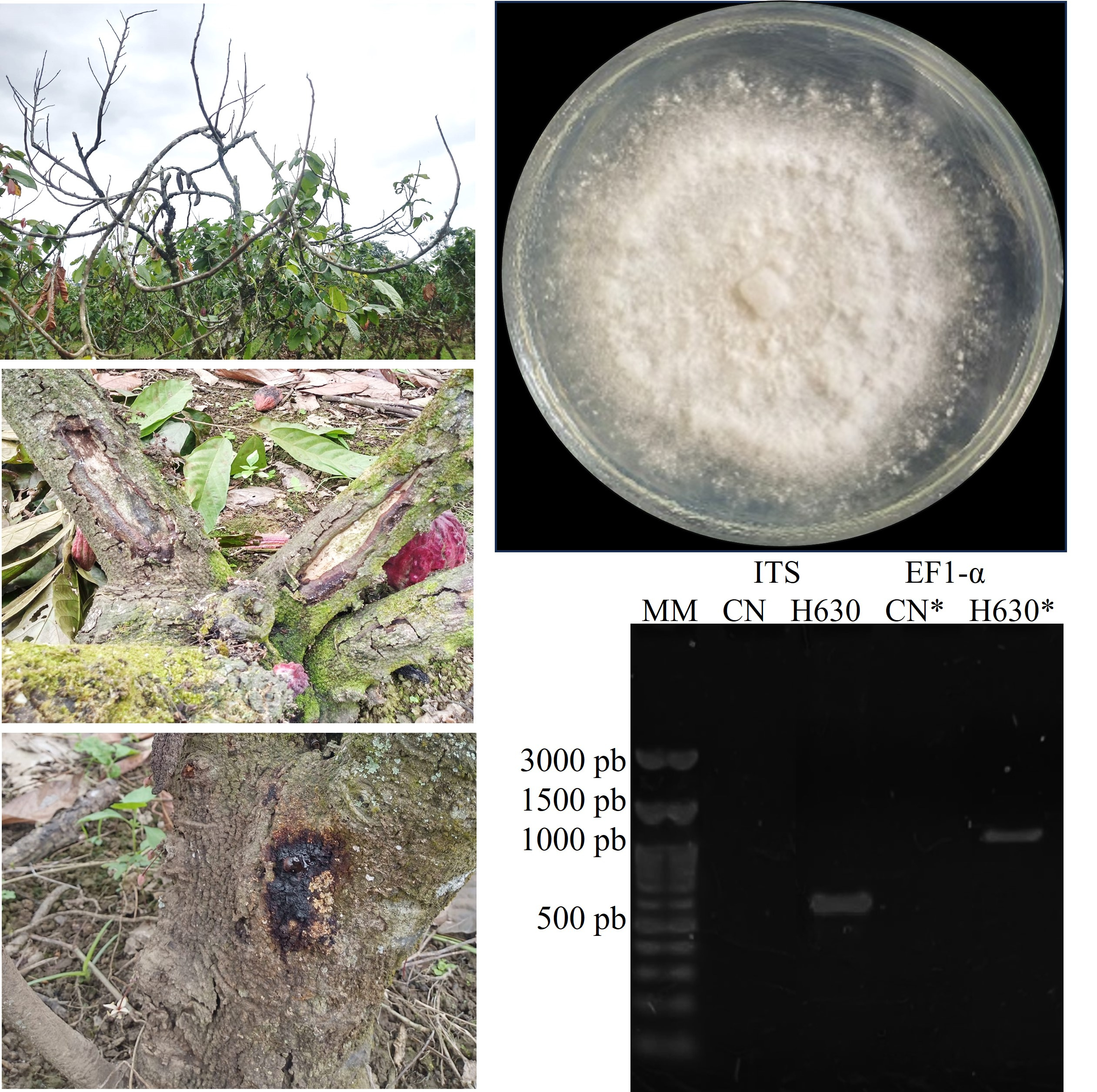
Copyright (c) 2025 José Humberto Vera-Rodríguez, Mónica del Rocío Villamar-Aveiga, Robinson J. Herrera-Feijoo, Jaime David Sevilla-Carrasco, Denny Moreno, Cesar Stalin Gavin-Moyano, Oscar Mauricio Chenche-López

This work is licensed under a Creative Commons Attribution-NonCommercial-ShareAlike 4.0 International License.
